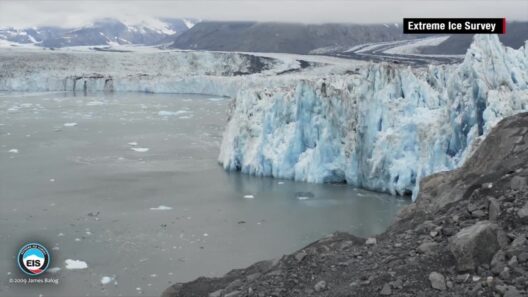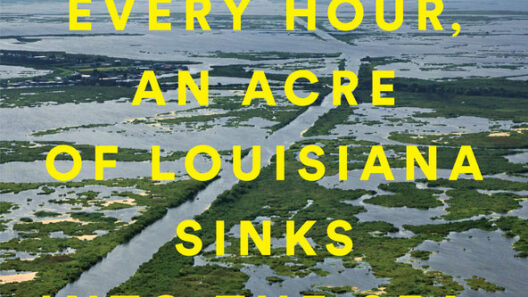In recent years, the phenomenon of freezing temperatures has stirred considerable debate among climatologists, policymakers, and the general public regarding its implications on global warming. A surprisingly persistent myth has emerged: that cold weather events disprove the reality of climate change. This contention, although pervasive, has no foundation in scientific fact. Understanding the nuanced relationship between local weather phenomena and global climate trends requires a fundamental grasp of both meteorology and climatology.
The distinction between weather and climate is paramount. Weather encapsulates short-term atmospheric conditions in a specific region, while climate represents the long-term average of these conditions over extended periods—typically 30 years or more. A commonplace misconception arises when individuals conflate a temporary cold snap with overarching climatic shifts. For instance, a bitterly cold winter in one part of the world does not negate the overarching trend of rising global temperatures, as trends are derived from systematic collections of data that span multiple seasons and years.
Moreover, climate change encompasses not just an incremental increase in average temperatures, but also alterations in weather patterns, increased frequency, and intensity of extreme weather events. These changes can manifest as unusual cold fronts in some locales, even as the planet warms overall. Such a counterintuitive dichotomy is a hallmark of a warming globe; increased levels of atmospheric energy can lead to perplexing weather phenomena, including record-breaking snowfall and frigid temperatures in regions unaccustomed to such extremes.
One possible contributor to these bizarre weather events is the disruption in the polar vortex, a large area of low pressure and cold air surrounding the Earth’s poles. When the polar vortex remains stable, it confines the cold air to polar regions. However, warming, particularly in the Arctic, can destabilize this vortex, allowing frigid air to spill into lower latitudes. Thus, while parts of the Earth experience uncharacteristic winter weather, this phenomenon does not counteract the evidence of climate change; rather, it exemplifies its complexities.
Additionally, terminology such as “global warming” can create confusion. Many assume it merely denotes an increase in temperatures, while it actually implies a shift in climatic norms. Global warming contributes to a multitude of secondary effects, such as rising sea levels and shifting habitats, which ultimately influence local weather. It is essential to acknowledge that extreme cold events can occur in an overall warming climate as part of this broader system of altered climatic interactions.
The statistical reality is unequivocal. The Earth’s mean surface temperature has risen significantly since the late 19th century, with NASA’s data indicating a temperature increase of approximately 1.2 degrees Celsius (2.2 degrees Fahrenheit). This rising trend is interspersed with variability, yet the baselines are irrefutable. Despite sporadic freezing events, long-term trends demonstrate a predominance of warmer years since the 1970s, with recent decades exhibiting higher average temperatures consistently.
Furthermore, it is crucial to evaluate the socio-economic repercussions of climate change, reinforced by the incessant cycles of hot and cold weather. Agriculture, for example, may face devastating effects from fluctuating climatic conditions. Cold snaps can damage crops that are not acclimated to extreme temperature drops. Conversely, increased heat can yield droughts, negatively impacting food security. The resultant economic strain translates to heightened food prices and loss of livelihoods, particularly in vulnerable populations.
Contemplating the scientific consensus reinforces that skepticism towards climate change often stems from misinterpretations of evidence. Organizations like the Intergovernmental Panel on Climate Change (IPCC) emphasize the anthropogenic contributions to climate change, noting that greenhouse gas emissions are a prime contributor to the warming of the global atmosphere. Scientific models extensively corroborate these findings, illustrating that human activities—chiefly fossil fuel combustion and deforestation—have intensified the greenhouse effect, leading to unprecedented climatic disruptions.
Public discourse surrounding climate change frequently fosters divisiveness, driven in part by misconstrued narratives about extreme weather. To combat this, it is imperative to foster comprehensive education that articulates the science behind climate trends. This should include advocacy for sustainable practices, policies aimed at reducing emissions, and promoting resilience to the impacts of climate change across all sectors.
Furthermore, the conversation must embrace a range of voices, from scientists to policymakers and local communities, and impart critical understanding of climate phenomena. Although freezing temperatures may pose a challenge for immediate interpretation, they underscore a pressing need for discussions that transcend binary thinking. Climate change is not merely a tale of warming; it is a complex framework comprised of varied outcomes, including the likelihood of unexpected cold spells.
In conclusion, the narrative that freezing temperatures disprove global warming is a simplistic and erroneous perspective. A rigorous examination of climate data demonstrates a complex interplay of factors contributing to extreme weather, including anomalously cold temperatures. Acknowledging and addressing these complexities is crucial for informed dialogue and action on climate change. The challenges posed by climate variability are not insurmountable if approached with dedication, vigilance, and a commitment to understanding the intricate fabric of our planet’s climate system.






